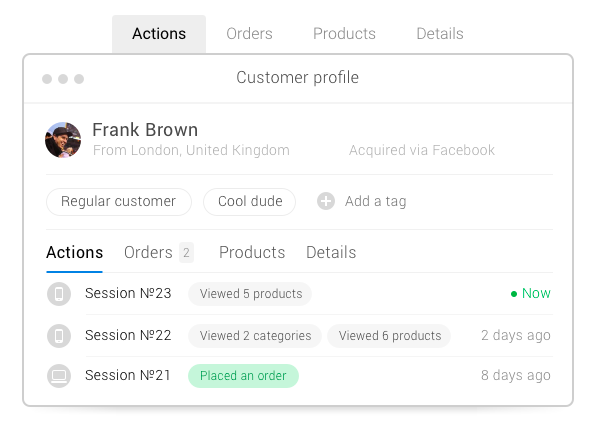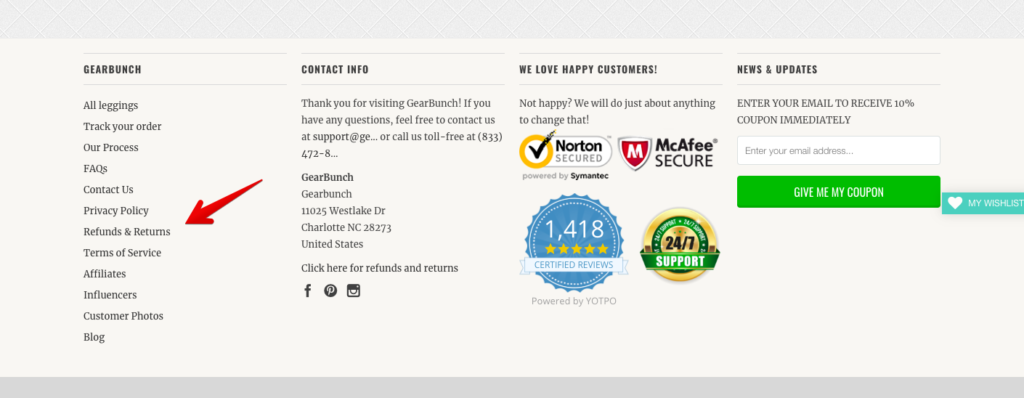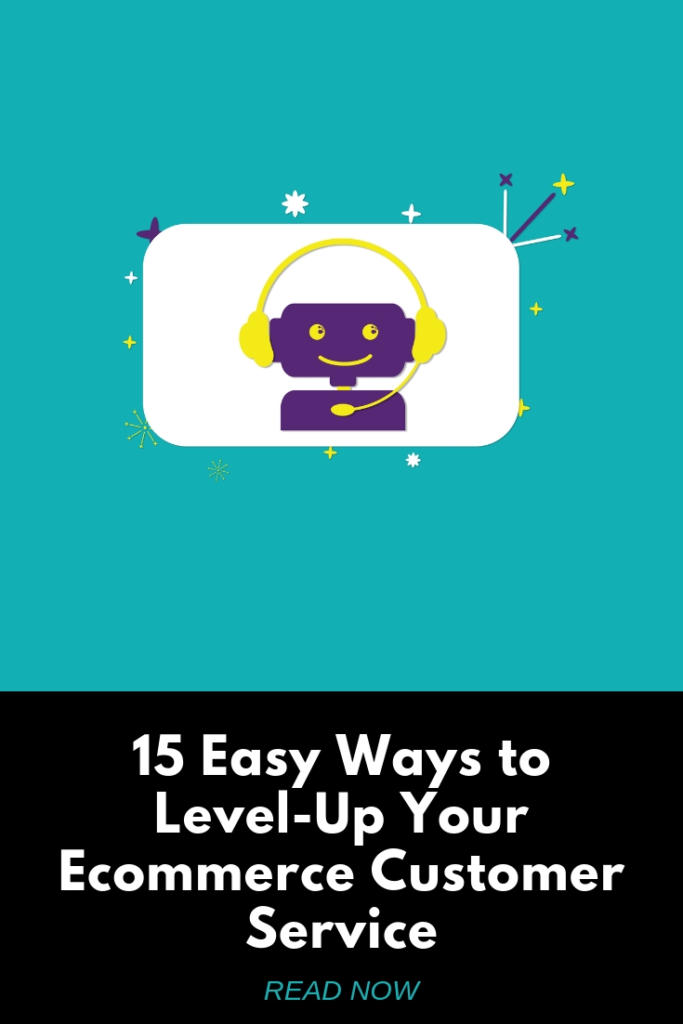Disclosure: Some of the links below are affiliate links, meaning, at no additional cost to you, Storehacks may earn a commission if you click a link to an external source.
Ecommerce customer support, customer success, customer satisfaction – whatever term you want to use, it’s based around the same principle. Helping people.
But the way you help people with their queries in your online store varies a lot.
- Are they thinking about buying?
- Have they just made a purchase?
- Do they already have their product in their hands?
Furthermore, it’s not unusual for your customers to smack you with the same problem 50 times in one day. And then 10 different problems the next.
Luckily, this article will help you in one way or another. Whether you need a quick and easy way to answer the same question hundreds of times a day or blow the mind of a customer that’s had an awful buying experience, you’re in the right place.
So let’s get stuck in with 15 ways that you can level-up your ecommerce customer service.
1 – Pick and commit to your ecommerce customer service channels
Social
We’ve all used social media channels at some point. In fact, social media is becoming the prefered channel for customer care.
Chances are that you already use social media for your marketing efforts. Social media should also be at the forefront of your ecommerce customer service. With many of us connected to social media, it’s the default channel that many of your customers will use to reach out to you for any kind of help.

Being able to deal with support inquiries from Facebook, Twitter, Instagram and anything else means that your customers aren't left waiting for the help they want.
Live Chat
Live chat is hot on the heels of social media as the preferred channel to communicate with a brand – both before and after a sale.
Why is that?
It’s convenient for customers– A user connects instantly, they’re able to multitask, and customers have a copy of the chat emailed to them afterwards.
It saves money – No need to create email addresses or buy new phone numbers. Live chat is a cost-effective solution to engage with your customers.
It saves time – If you’re not answering a customer service inquiry, you’re free to do whatever else. If you’ve hired someone dedicated to answering the phone, that’s probably all they can do. With live chat, you can be preoccupied with something else until the inquiry comes.
Email is still the go-to support for many many consumers. A quick generic question can be answered via social media or live chat. But if there’s been a big mix up or a situation is very very complex, email will be the go-to medium.
It will be for a long time to come.
Email is beneficial to you, as you can take your time to reply. It's beneficial to your customer as they can craft a lengthy email, reread it and send it.

Protip: Be sure to tell customers when what days of the week they won’t get a reply out of you. Ecommerce customer service is also about courtesty, too!
Phone
Phone chat is highly appreciated as people can get a question answered then and there. More on phone support later.
2 – Get to know other ecommerce customer service channels
These aren’t the go-to support channels, but they’re certainly ‘must-have’ ecommerce support channels to run an ecommerce business.
Knowledge base
If the product or service that you’re selling needs some kind of manual people are going to have questions. A thorough knowledge base will help your customers solve the problem themselves and make your brand come across as an ecommerce customer service hero.
Lay it out in an easy to navigate format and encourage people to check it out before they reach out to you for help.
FAQs
For the same reasons that a knowledge base is great for customer service, as is an FAQ.

A page dedicated to answering frequently asked questions can solve some simple questions that many people have, that don’t exactly deserve their own inquiry.
3 – Use a CRM
Your ecommerce platform might come with a built-in CRM (customer relationship management) platform. If you're dealing with a large number of inquries, the vanilla CRM is probably holding back your ecommerce customer service efforts.
Shopify and many of its competitors have plug-ins that let you manage customer inquiries.
Consider a third party CRM platform, as that's what will help you out best.
A dedicated CRM means that all your customer accounts, inquiries, and communications are handled within the one platform. You can stick to using your ecommerce platform for the buying and selling aspects of your brand.

Furthermore, a good CRM platform can sync with all your ecommerce sales channels (your website, Amazon store and eBay store). It'll handle all sales and inquiries that come from any channel imaginable.
4 – Be proactive in helping your customers
Good ecommerce customer service also involves solving questions before they're asked.
Do you notice that a lot of your customers have the same recurring questions? Sure, build an FAQ, but also considering placing an FAQ card in their purchase. This way, their question gets an answer before they even know they have a question.
Little things like this have a positive impact on your brand’s buying experience.
5 – Encourage buyers to create an account
But after they’ve paid for their first transaction.
When someone has an account, there’s an inherent value associated with their brand. If you have a loyalty program (and you should), an account is where their points and rewards are tallied up.
A dedicated account means that your customer can see their data, transaction history, and all other necessary data without having to reach out to you.
Don’t ask your customer to create an account before they buy from you, though. Ask them to make an account only after payment has been made.
6 – Keep an updated Return Policy
Regardless of what you’re selling, you should always have an up to date returns policy on display in your store.

Return policies and customer support go hand in hand. If a customer has an inquiry about a return, draw their attention to your return and refund policy.
7 – Stay engaged with mobile buyers
You’ve no doubt heard it a lot – be sure that your website is mobile friendly and loads quickly.
Yes, yes, it’s true. But does your checkout function with mobile payment options?
Is a customer taken from their browsing platform to their preferred payment method on mobile?
If someone has come to your website via Facebook or Instagram, are they able to buy while using the default Facebook or Instagram browser?
If a customer can't complete a purchase on a mobile device, they may churn. They may reach out to you for help. Solve both these problems by making your checkout process is optimized for mobile, rather than just mobile-friendly.
8 – An angry customer is an opportunity
From time to time, things will go wrong. That’s business and pobody’snerfect. A good ecommerce customer service plan will help you deal with the most frustrated of customers.
But rather than seeing an angry customer as a reason to apologize endlessly, consider it as a positive. One of the hardest things about ecommerce is to get feedback from your customers.
Are they happy, are they let down, are they delighted? When your customer is pissed, you’ll know, because they’ll reach out to you.

Try seeing a disgruntled customer as an opportunity to go above and beyond. Ask them what needs to happen in order for you to solve their problem – and then go above that. For example, if you’ve accidentally sent someone the wrong size, send them the correct size.
Also, pay for them to send the product back, and then throw in a discount code for the next purchase.
I LOVE getting messages from cranky folks. The same passion they show when flaming on us can be redirected into being a passionate brand evangelist. BUT, only if you fix their problem immediately, be gracious in your screw and help them out as best you can.
Go above and beyond. Very few people actually do.
9 – Measure customer satisfaction
As you just read, it’s tricky to engage with customers and get their feedback. There’s very little incentive for them to do so. But only through customer feedback, can you improve the way you operate.
But just because it’s hard, doesn’t mean that you shouldn’t try.
Considering offering that incentive for your customer to give feedback. A discount on their next purchase, bonus points on their loyalty program, or some kind of freebie.
Use Typeform or SurveyMonkey to create a customer feedback form and then automatically send it out to customers (along with their incentive) a week or so after their purchase has arrived.
10 – Reduce customer effort
While the ecommerce industry is only going to keep growing, that doesn’t mean that people will be willing to put in more effort to buy.
Quite the opposite, actually.
If a customer has to actively hunt for a way to get in contact you, they’re even less likely to commit to a purchase. Especially when your competitor is offering a similar product.
By making it easy for your customer to contact you via email, live chat, social media, phone and all the other channels, you minimise the chance of them leaving your website. There is less effort for them to get what they want.
11 – Communicate inline with your image
This point is a little risky, but hear me out.
If your tone of voice is one that’s someone humorous, fun and bold, bring that into your customer service experience.
Example: if you refer to your customers as ‘part of a tribe’, bring that into your customer service.
Respond in ways like ‘many people of our tribe have this question and I’ll be more than happy to answer it for you’.
Don’t do so in a way that puts your tone of voice and image above helping your customer. But try and do so in a way that creates a consistent experience.
12 – Build a seasonal team
If you find that you can handle orders for the most part of the year, but Christmas and mother’s day is crazy, prepare for that. Have go-to people that you hire for such periods.
Bring them up to speed about your customer service methods, to minimise response times in heavy periods.
When there’s a frantic rush on, such as Christmas, problems are only exacerbated by delayed assistance. Plan for these heavy periods well in advance.
13 – Be personal
Don’t use generic templates when sending out emails to customers – if you do, be sure that a user's first name is used. Use an email marketing platform that lets you create templates from scratch and put in your own variables.
No personalization stands out a lot more than the most basic level of personalization.
Eg, ‘Dear Sarah’ is a lot better than ‘Dear client’.
Using a chatbot on Facebook Messenger or a live chat? Be sure that you use the same levels of personalization in an email.
14 – A customer’s problems are your problems, even if they’re not.
If you’re drop shipping, selling POD or using a 3PF (third-party fulfillment) service, you don’t touch your product before it goes to the customer.
But you can be sure that if there is any problem with the product, you’ll be the one that your customer reaches out to.
The worst thing you can do in this situation is ‘you’ll have to check with the supplier/warehouse’. That’s not good customer service. Your customers expect you, the brand owner, to solve their problems.
Take their problem and reach out to your manufacturer or 3PF service. If you’re adamant about providing excellent customer service, get involved where you can.
Like, if a courier company misplaces a customer’s delivery, solve it on behalf of your customer. By showing the initiative and taking the problem on yourself, you’re going above and beyond in the name of your brand.
As mentioned, good ecommerce customer service is about solving problems – even if they aren't problems that you've caused.
15 – Phone support is best for solving problems
There is an overwhelming amount of searches every month for questions like ‘Amazon phone number’ or ‘Esty phone number’. This is due to the fact that some people still prefer to talk to a real person in real time and get a response from a real person in real time.
Using phone calls, customers get a response from a real person. This is the fastest way to alleviate any problems your customers may have – or, at the very least, update them with a problem you're trying to solve.
You might not need a full blown call center. But a phone number that’s associated with your online store can help you solve a customer’s problems in an instant.
Conclusion
There you have it. A little over a dozen ways that you can solidify your ecommerce customer service game. These might not be ideas that you implement in one massive swoop. In fact, I’d suggest against it. Implement them in an order that you best see fit, and like all things in ecommerce, measure the results.
If you find that more people prefer to chat with you on the phone rather than live chat, dedicate resources to that support channel. Just don’t ignore a channel completely. The one customer that prefers to talk to you via Twitter, when you don’t have a big Twitter game, maybe the one custom that ends up being a nightmare.
Excellent customer service is based on genuine help, compassion, and understanding. Make these the basis of each conversation and you’ll be on your way to world-class customer support.



